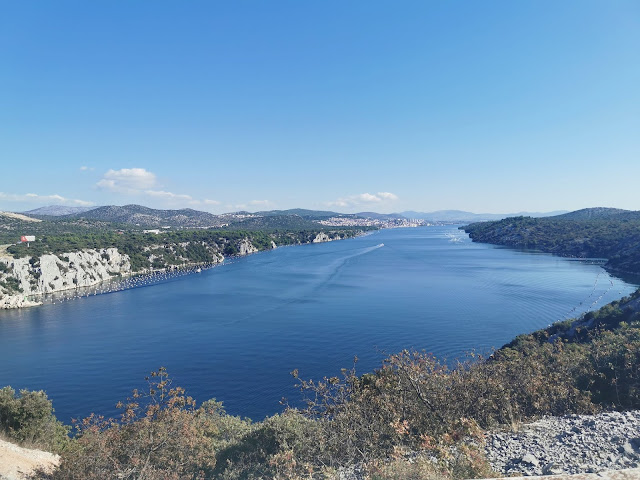Adventures to the Balkans Travelogue Pt. 6: Split, Croatia
Saturday, May 30, 2020
Now we come to the 6th part of our Balkans travelogue - the beautiful city of Split in Croatia. It is here that we come to learn of the emperor Diocletian's customs, how he became emperor, more about his palace, beautiful Diocletian singing... among many others. I hope the pandemic has treated you, my treasured reader, well and that this travelogue is a respite for you in this period of travel lockdown. Are you ready for a relaxing tour of Split? Come on in...
Emperor Diocletian's Palace had its north, south, east and west gates built from gold, silver, iron and copper in a 30,000sqm castle.
Here, you can see the original tiling from the original palace and then the new tiling after the castle was destroyed and rebuilt.
Beautiful singing from a traditional Diocletian choir, whose singing style is preserved from the Roman times till today! These singers used to serenade the emperor Diocletian while he held court in his palace.
The people used to hate Diocletian for his persecution of Christians. Thus they built the bell tower to be the tallest part of the palace to spite him. It was later used as a church even though Diocletian would never mean for it to be one.
Emperor Diocletian ruled from the Eastern part of the Roman kingdom and was taken by Eastern mythology like Buddhism, Hinduism and Egyptian mythology. There is even a sphinx figure sitting at the ledge of the entrance to his palace, as you can see from below.
Rumour had it that the ruler would have 20-course dinners, and his entourage would eat and then vomit and continue eating. Also, the Romans did not eat around the table but would eat lying down.
Two Roman soldiers dressed the part for a photo opportunity.
Inside the Palace is the Cathedral of Saint Domnius.
There was a prophecy that Diocletian would become emperor after killing a "boar". He was then one of the bodyguards of the previous emperor, and one day he prevented the assassination of the then-emperor by an assassin whose name meant "boar". Thus the prophecy came into fruition, and Diocletian was elevated to the status of the emperor.
These doors were carved by medieval Croatian painter and sculptor Andrija Buvina in ~1214, depicting the life and times of Jesus Christ.
The Bishop who is holding his book like he's taking a selfie was credited as one of the early proponents of the Croatian language.
Traditional trinkets of Croatia.
Buskers serenading the crowd.
Delicious "Black and White" risotto of squid ink and cheese Italian rice. The food was definitely one of the highlights of this tour. We were very, very well-fed!
The last few parts of the Balkans trip shall be uploaded over the next month or so, so keep checking back for more!
Singapore Adventure to the Balkans EU Travel Review Split Croatia Dubrovnik Ljubljana Bled Slovenia Sarajevo Bosnia Risotto Black and White Foodie Food Beautiful Scenery Europe European Travel Retirement Travel Diocletian Palace Church of St Domnius Jesus Christ Sculpture Carving




































0 commentors